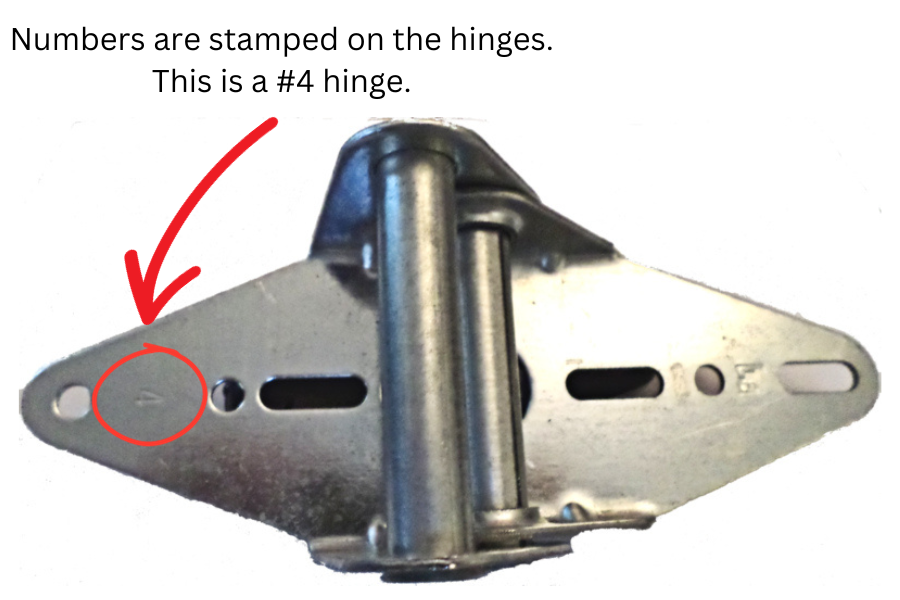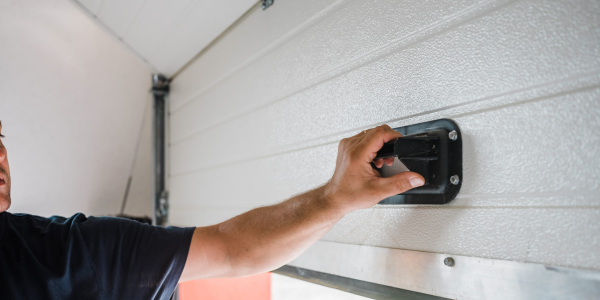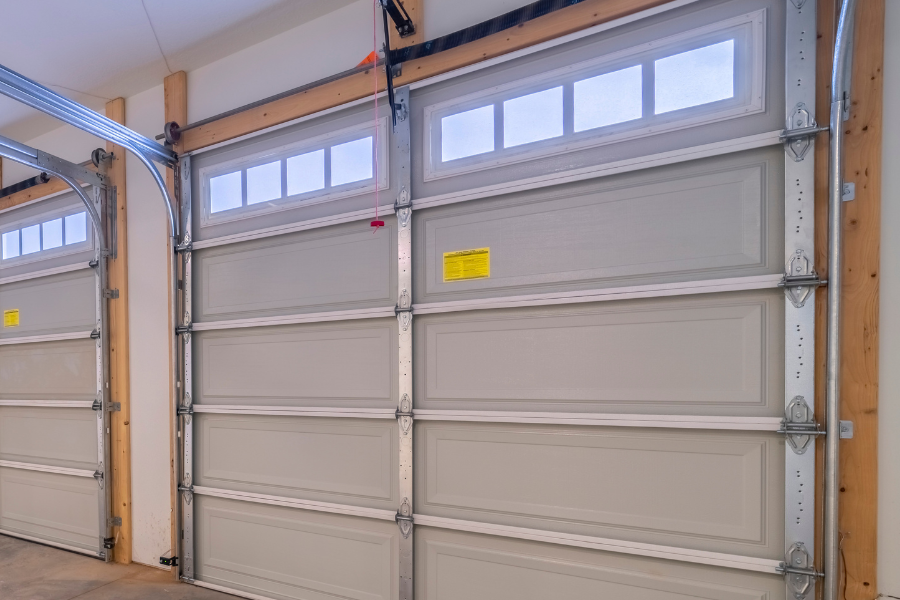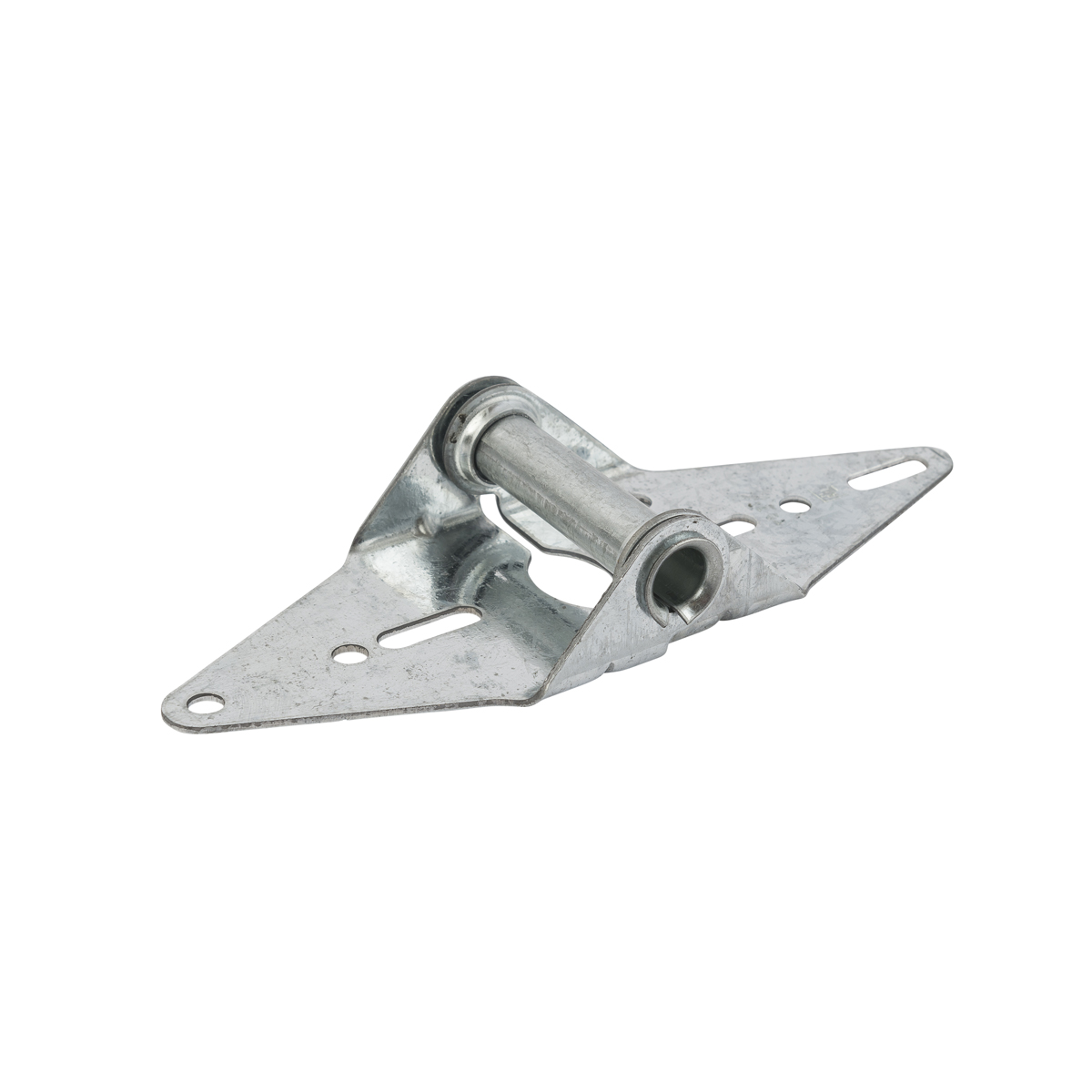The Ultimate Guide on Garage Door Hinges: How to Service and Replace Garage Door Hinges
How to Service and Replace Garage Door Hinges
If you have a garage, you know how important it is to have a functioning garage door. One crucial component of a garage door is the hinges. Over time, hinges can wear out or become damaged, leading to a noisy or malfunctioning garage door. Learn how to service the hinges to get the most out of them and how to identify and replace hinges that have worn out by following this guide.

Signs of Worn-Out or Damaged Hinges
It’s essential to be able to identify signs of worn-out or damaged hinges. Here are a few common indicators:
- Noise: If you notice squeaking, grinding, or rattling noises when operating your garage door, it may be due to worn-out hinges.
- Difficulty Opening or Closing: If your garage door is sticking or not moving smoothly along the tracks, it could be a sign of hinge problems.
- Visible Damage: Inspect the hinges for any visible signs of damage, such as cracks, rust, or bent metal. These issues can impact the performance of the hinges.
- Loose Screws: A loose hinge screw can cause the hinge to rip or tear. When this happens the door sections can bind or become crooked and cause damage.
- Rust: Finding rust on the hinges could lead to the hinges becoming weaker and eventually breaking.
Identifying Garage Door Hinges
If you have found hinges that are damaged or worn-out then the next step is to identify the type of hinges that your garage door uses so you can purchase the correct replacements. There are four factors to consider when choosing replacement hinges: style, type, hinge number and thickness of hinge.
1. Style of Hinges
Style: Wide body, narrow body, half hinge and anti-pinch design. The wide and narrow body hinges are the most common. The wide body hinge will have an approximate measurement of 2-1/2″ to 2-3/4″ width while the narrow body will be closer to 2″-2-1/4″. The half hinge and anti-pinch design hinges are going to be more specific to a particular brand of garage door. Check with the manufacturer of the garage door for the specific size of hinge used on the door.

2. Type of Hinges
Type: End hinge or center hinge. The end hinges are mounted on the ends of the door sections while the center hinges are mounted in the center of the garage door.
3. Hinge Number
Hinge Number: Hinges on a garage door are labeled with numbers to show their position. Center hinges are marked with a “C” or the number 1. End hinges are numbered from 1 to 5. The number 1 hinge is installed between the bottom section and the second section. The number 2 hinge is installed between the second and third section. The numbers increase as the door goes higher.


4. Gauge of Steel
Gauge of Steel: The steel gets thinner as the gauge number increases. The 18 gauge steel hinges are less expensive and suitable for light duty non-insulated garage doors. For residential garage doors, it is more common to use hinges made of 16 or 14 gauge steel, which are recommended. By using a heavier gauge hinge, there will be less concern about the hinge breaking or tearing. If you are replacing the hinges on a wood door or large commercial garage door then you’ll want to use the heavier duty 14 or 11 gauge hinges.
How to Replace Garage Door Hinges
If your hinges are severely damaged or worn out, it may be necessary to replace them. Here’s how:
- Identify the Type of Hinge: Identify which hinges need replaced and note the type, style, hinge number and gauge of steel hinge you require. It is also a good idea to measure the holes in the hinges you are replacing so you can confirm that the replacement hinges will have the fastener holes in the same position.
- Purchase Replacement Hinges: You can find wide body hinges, narrow body hinges, half hinges and pinch resistant hinges online. You should also consider purchasing some new fasteners for the hinges at the same time.
- Secure the Door: Before replacing the hinges, close the garage door and unplug the garage door operator so it doesn’t run while you are replacing the hinges.
- Remove the Old Hinges: Use a socket or wrench to remove the screws holding the old hinges in place. Take note of the position of each hinge for proper installation of the new ones.
- Install the New Hinges: Align the new hinges with the existing holes and secure them in place using the screws. Make sure they are tightened securely.
- Lubricate the Hinges: Once all of the hinges are replaced spray each of them with a light coating of garage door lubricant. Use a silicone or synthetic based lubricant. This will help keep the hinges from rusting or making noise.
- Test the Door: Once the new hinges are installed, carefully raise and lower the garage door and test its operation. Ensure that it moves smoothly and without any binding or excessive noise.
- Extra: While replacing the garage door hinges you may want to also consider replacing the garage door rollers. Read our Guide on Replacing Garage Door Rollers for more helpful information.

How to Service Garage Door Hinges
Do a simple once over by following the steps below every 6 to 12 months. By doing this regular maintenance and servicing it can help extend the life of the garage door hinges. Here are some steps to service your hinges:
- Inspect the Hinges: Check for any visible signs of damage or wear. Look for rust, cracks, or loose screws. If you find any damaged hinges don’t wait to replace them. A broken or damaged hinge can cause the door to jamb or crack which may cause damage to the sections.
- Clean the Hinges: Remove any dirt or debris from the hinges using a soft brush or cloth. Be sure to clean both the hinge plates and the hinge barrels.
- Lubricate the Hinges: Apply a light coating of silicone or synthetic lubricant specifically designed for garage doors to the hinge barrels. Then take a clean rag and wipe the hinges so no excess lubricant drips onto the garage floor or vehicle. This will help reduce friction and ensure smooth operation.
- Tighten Loose Screws: Use a socket to tighten any loose screws on the hinges. Loose screws can cause misalignment and affect the performance of the hinges.
By following these steps, you can service and replace your garage door hinges effectively. Regular maintenance and prompt replacement when necessary will help keep your garage door functioning optimally for years to come.
As an Amazon affiliate we earn a commission from purchases through product links.








